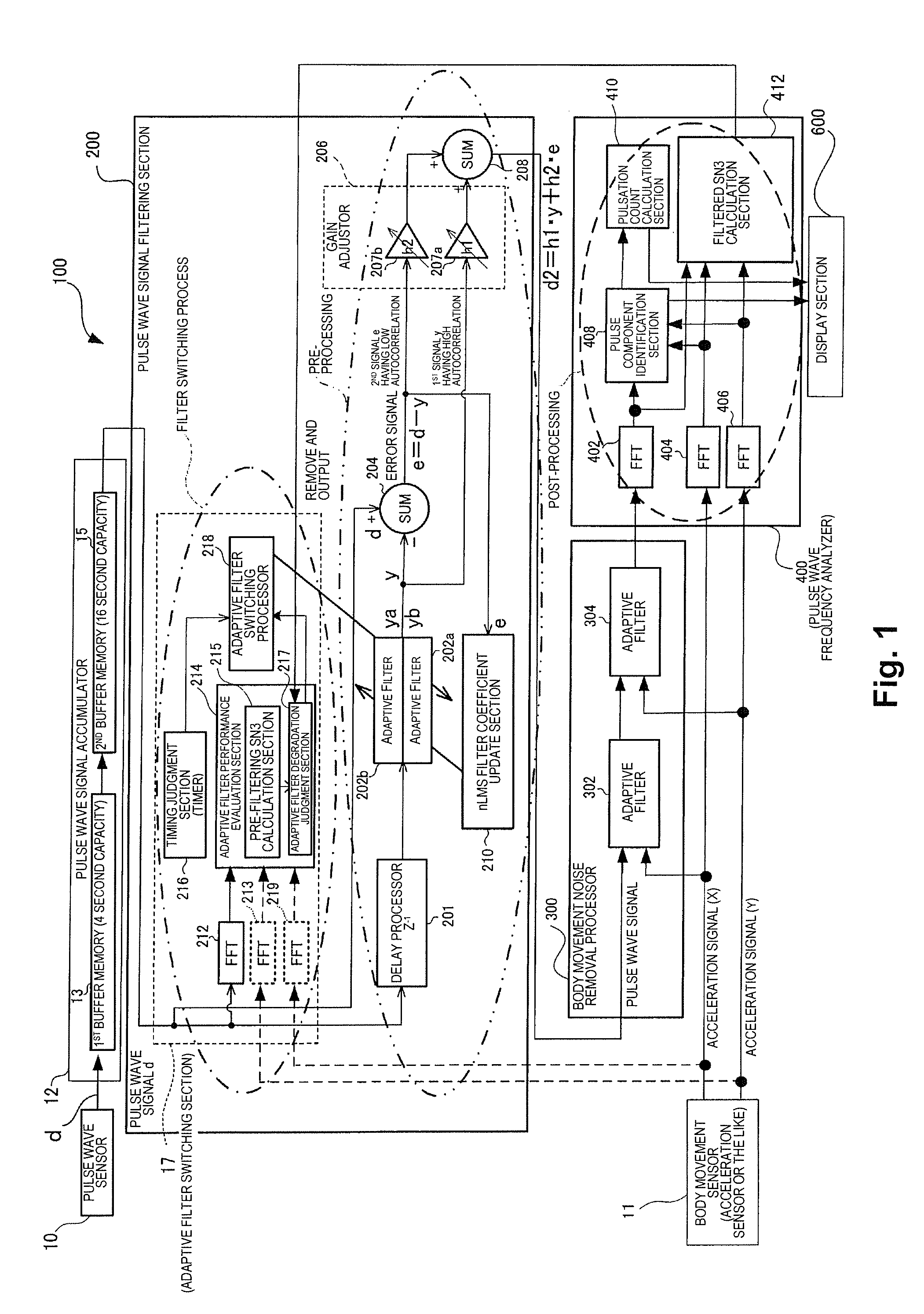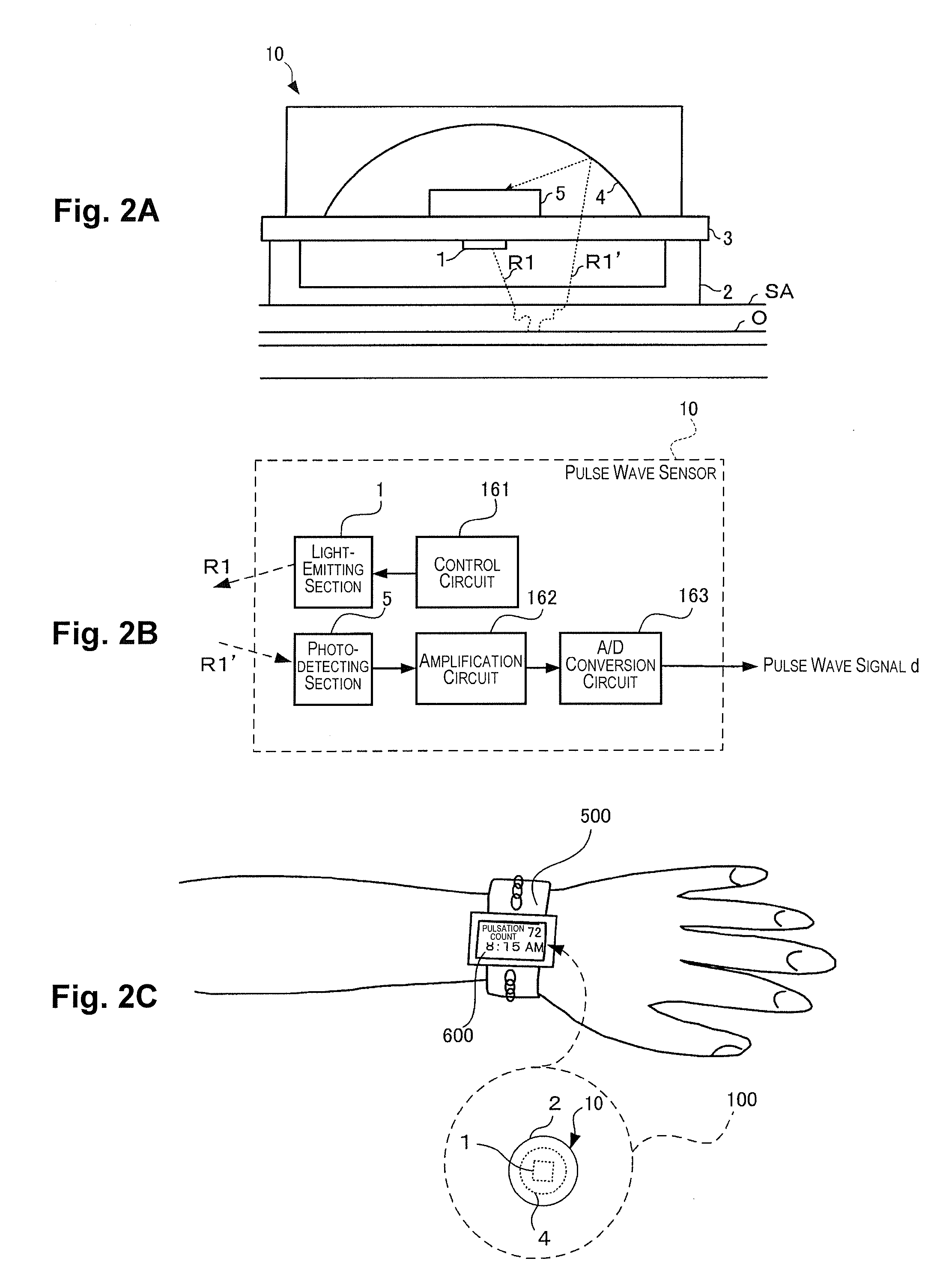Pulse detector
a pulse wave and detector technology, applied in the field of pulse detectors, can solve the problems of large noise intermixed with the pulse wave signal output, few arterial blood vessels, and difficult to see the motion of the heartbeat in the venous bloodstream, so as to reduce the occurrence of pulse detection failures and detection errors, reduce the effect of filter configuration and effective us
- Summary
- Abstract
- Description
- Claims
- Application Information
AI Technical Summary
Benefits of technology
Problems solved by technology
Method used
Image
Examples
first embodiment
Overall Configuration Example
[0059]FIG. 1 is a view showing the configuration of an example of the pulse detector of the invention. The pulse detector 100 shown in FIG. 1 is a type of sensor device for detecting a pulse signal originating in the pulse of a subject (including humans and animals), as well as a heartbeat, and other biological information or the like that correspond to a pulse signal.
[0060]Here, the word “pulse” in a medical context refers to activity that occurs when periodic contractions and relaxations of the heart as well as internal organs in general are repeated. As used herein, the term “pulse” refers to pumping motion in which the heart periodically sends blood. A heartbeat count is referred to as the number of pulses of the heart in a single minute. The pulsation count is the number of pulsatory motions in a peripheral blood vessel. This number of times thus counted shall be referred to as a “pulsation count” or merely as a “pulsation” because pulsatory motions...
second embodiment
[0166]FIGS. 9A and 9B are views showing the result of examining fluctuation of the S / N index (SN3) in each example of switching adaptive filters and in an example without switching (comparative example) in response to elapsed time.
[0167]Here, a subject wears the wristwatch-type pulse rate meter (i.e., pulse detector 100), and walks for 20 minutes. The pulse wave signal is filtered by the adaptive filters, the S / N index (SN3) is calculated for the filtered signal, and the calculation results are plotted on the time axis.
[0168]In FIGS. 9A and 9B, the horizontal axis is the time axis, and the vertical axis is an axis showing the values (%) of SN3, which is the S / N index. FIG. 9A shows the change in SN3 over time until 10 minutes have elapsed from the start of walking by the user as the subject. FIG. 9B shows the change in SN3 over time until 20 minutes have elapsed from a time point at which 15 minutes have elapsed. Also, the data that corresponds to the present embodiment is shown by ...
PUM
 Login to View More
Login to View More Abstract
Description
Claims
Application Information
 Login to View More
Login to View More - R&D
- Intellectual Property
- Life Sciences
- Materials
- Tech Scout
- Unparalleled Data Quality
- Higher Quality Content
- 60% Fewer Hallucinations
Browse by: Latest US Patents, China's latest patents, Technical Efficacy Thesaurus, Application Domain, Technology Topic, Popular Technical Reports.
© 2025 PatSnap. All rights reserved.Legal|Privacy policy|Modern Slavery Act Transparency Statement|Sitemap|About US| Contact US: help@patsnap.com



